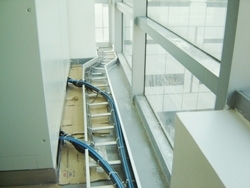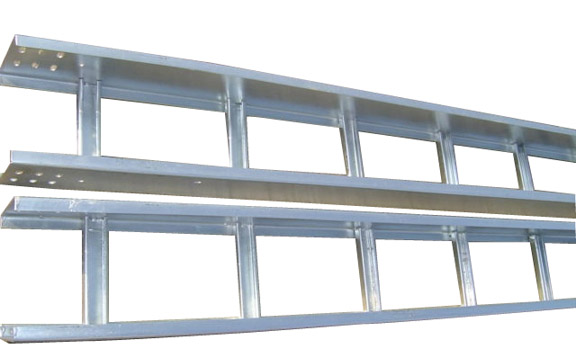高壓母線(xiàn)槽廠(chǎng)母線(xiàn)槽和橋架區別是什么
高壓母線(xiàn)槽廠(chǎng)母線(xiàn)槽和橋架區別是什么
What is the difference between bus duct and Bridge in high voltage bus duct plant
,這兩種產(chǎn)品,不是一個(gè)類(lèi)別的.母線(xiàn)槽的作用與電纜一樣,是傳輸電流的.橋架是一種支架,一般常見(jiàn)的就是電纜在橋架上敷設走線(xiàn). 母線(xiàn)槽和橋架屬于配套的關(guān)系. 母線(xiàn)槽自身無(wú)法敷設,需要橋架支撐固定。
First of all, these two products are not in the same category The function of bus duct is the same as that of cable, which is to transmit current Bridge is a kind of support. Generally, cables are laid and routed on the bridge Bus duct and Bridge belong to supporting relationship The bus duct cannot be laid by itself and needs to be supported and fixed by the bridge.
母線(xiàn)槽是電氣產(chǎn)品,由金屬板鋁合金外殼或者鋼外殼為保護外殼、銅或者鋁質(zhì)導電排、絕緣材料及有關(guān)附件組成的系統。它可制成標準長(cháng)度的段節,并且每隔一段距離設有插接分線(xiàn)盒,也可制成中間不帶分線(xiàn)盒的饋電型封閉式母線(xiàn)。為饋電和安裝檢修帶來(lái)了很大的方便。
Bus duct is an electrical product. It is a system composed of metal plate, aluminum alloy shell or steel shell as protective shell, copper or aluminum conductive bar, insulating material and relevant accessories. It can be made into sections of standard length, and plug-in junction boxes are set at intervals. It can also be made into feed type enclosed bus without junction boxes in the middle. It brings great convenience for feeding, installation and maintenance.


母線(xiàn)槽和橋架區別是什么這是密集型母線(xiàn)槽電纜橋架材質(zhì)有玻璃鋼,鋼,鋁合金幾種,主要是應對不同的使用環(huán)境.橋架是由托架、附件、支(吊)架三類(lèi)部件構成的,支承電纜線(xiàn)路的具有連續剛性的結構系統。是使電線(xiàn)、電纜、管纜鋪設達到標準化、系列化、通用化的電纜敷設裝置,包括梯級式、托盤(pán)式、槽式、組合式4類(lèi),彎曲半徑較大,可以有孔也可以無(wú)孔,可以半封閉也可以全封閉。線(xiàn)槽則是用來(lái)敷設電線(xiàn)或控制線(xiàn)、信號線(xiàn)的,彎曲半徑比橋架小得多,并且是全封閉的。
What is the difference between bus duct and cable tray? This is a dense bus duct. Cable tray materials include FRP, steel and aluminum alloy, which are mainly used in different environments Bridge is a continuous rigid structural system composed of brackets, accessories and supports (hangers) to support cable lines. It is a cable laying device that makes the laying of wires, cables and pipes and cables standardized, serialized and universal, including step type, tray type, trough type and combined type. It has a large bending radius, can have holes or no holes, and can be semi closed or fully closed. The trunking is used to lay wires, control wires and signal wires. The bending radius is much smaller than that of the bridge, and it is fully enclosed.









